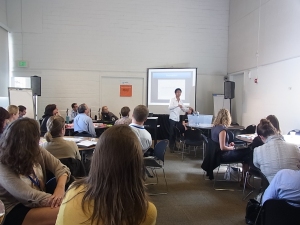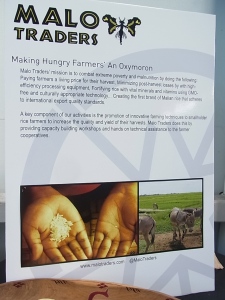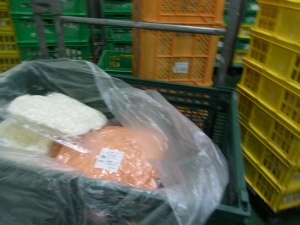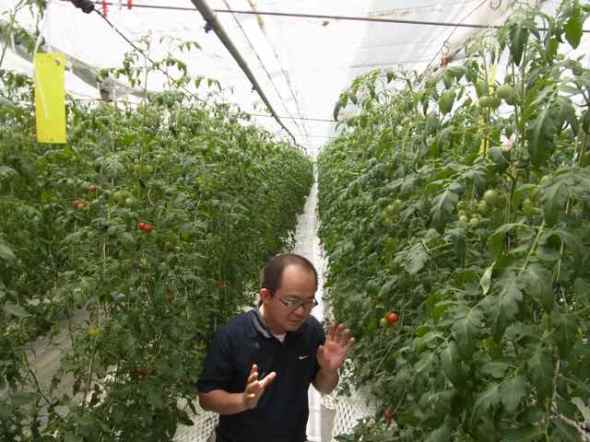Pecha Kucha Night in the morning in the centre of Tokyo
Posted: January 26, 2012 Filed under: Uncategorized Leave a commentToday I talked with other speakers in a 6 minutes, 20 slides, 20 seconds for each slide, about BoP and its innovation from the bottom-up.
It was really brilliant to find a great community on social designing, especially I was really interested in Second Harvest’s Charles, and Greenz.jp’s Yoshi Kanematsu, whose design thinking is very similar to the process I followed so far, as far as I think. I would love to talk and deepen the knowledge more.
This is the 3rd week in Tokyo now and now getting to be a month away from my home. I am feeling like being really Japanese now since there is very few opportunity to think about globe, if you live in Tokyo. That is the struggle and the obstacle for those living in Tokyo, I feel.

SOCAP11: was it worth going?
Posted: October 27, 2011 Filed under: Uncategorized Leave a commentI should have uploaded other topics learning from Wagoen, but will skip and put this article first.
SOCAP venue was in the old warehouse in the pier. (it was really cold out there….)
SOCAP was held last months (in the beginning of Sept) and it was the first time to visit this year. I heard so much about SOCAP, and there is both good and bad rumors. I will give my impression here, so that you can examine for the next year round.
First of all, it is surprisingly unknown by other people who never been there, that SOCAP was almost run by HUB people. HUB Bay Area’s founder is also the main person to run SOCAP. So, now you see, SOCAP is very embeded in the contexts of Bay Area, social innovation culture.
HUB SOMA (HUB SOMA is located in different place from SOCAP venue, so we gathered here at just only the pre-event night, not during this event.)
I am not pure admirer of Bay Area culture, honestly speaking. There is a style. I can understand Bay Area style, but I know it’s not my style. So, my comments here are sometime ironical, or neutral in a way to look at this whole event.
During SOCAP, sessions are too many and of course I cannot attend all of them, and the schedules are packed. Most of the sessions are in some space or room in the warehouse, and it was rather “presentation-Q&A” style, so that the real interaction with each speaker were less than I had expected.
The contents are okay, but not impressive. Too many speakers, short sessions at each time. (and sometime some of them are unimportant, unmature and they talked too much to spend a lot of time, so that all the discussions sounds like in the air, some of the brightest impressive remarks were made by only a few people.)
But the people gathered were excellent. (I don’t know why this all happen together.) I found some of the presentation really interesting.
Krista from D-rev.
Some of the presentation I heard were impressive. They are advocative and stimulating and making you sounds like “oh” or “hmmm” or “aha!”. This was really good experience that I can say SOCAP is worth coming.
Josh from Innosight. Talking about Mike Tyson?
If you are not familiar with Bay Area Culture or this sort of social innovation atmosphere, you will quickly grab the manner here. How you think, how you can express your self, how people will observe you in Bay Area social innovation manner. (even though you think it’s not your style, you can feel it here.)
It is very tough to find a good presentation. I heard so many people who came for the first time couldn’t find the good presentation, and they found the sessions are not as good as they expected.
But, actually, SOCAP is not for hearing presentation. This is the place you have to move actively to catch the people.
Socap is worth coming. but only if YOU HAVE A PURPOSE TO VISIT. If you have specific projects that you have to find a partner or investors, or you need to find other methodology that makes your work improved, it’s worth coming. But for the people who just start thinking about social innovation or social entrepreneurs, I think, they can find a good friends who also think like you, at the same level of struggle or thoughts, but they are mostly students from Bay Area. If you want to mingle with them, I suggest to apply for the volunteer to SOCAP, so that you don’t have to pay anything and work 18hours during this event and attend some presentation workshops.
But, the best thing in SOCAP is making a appointment to meet up. You should better carefully organize your self and focus to catch the important people that you have to talk. Some of them are not replying you back in advance, so that you should remember their face and meet them in the cafe by accident. But standing and saying Hello is important, and then within 5 mins talk, you will find a good partner for your business for next year.
(The showcase was displayed in the public: social entrepreneur’s design ideas.)
If you are the social entrepreneur, please GO TO SOCAP TO CATCH THE INVESTORS OR BUSINESS PARTNERS!!!!!!
As far as I saw in the showcases or social entrepreneurs’ pitch, there are very few new ideas coming in. I saw the same entrepreneurs in other Bay Area conferences, and there is a lack of new comers, especially from Africa and South Asia (other than India).
For example, I met so many Indian social entrepreneurs this time, and felt that this is typical to Bay Area, since Stanford seemed to nurture and attract investment to Indian social entrepreneurs’ sphere. But the people introduced here as a social entrepreneurs from developing countries are one of the big pool. Very limited number, limited ideas, and there is a lot of opportunity to explore here.
I suggest to social innovators in other areas (other than Bay Area) should think twice to come over to this event, even though their style is different and maybe uncomfortable. Since you might get to know the logic of the investors from Sillicon Valey social Angels, and also they will notice you here. For them, it’s almost miracle to find you from the sea of many sparkling stars.
If you hesitate, please contact me. I will recommend you anyone to SOCAP related or HUB, and also will update the scholarship program for you to come over to SOCAP.
WAGOEN story2: What we can learn from WAGOEN
Posted: August 5, 2011 Filed under: Japan Leave a commentWhat I was most interested about WAGOEN was its collective fund to invest in the community. WAGOEN doesn’t claim themselves as “social” company or “microfinance company” or what ever related so-called social business these days, but their original principle is simple and sticking to the core of community, which is all the time refrained in social business sphere.
The first idea of WAGOEN was from the founder’s idea of “how to utilize the wasted products to add values for selling”.
In Japan, the shape of vegetable matters a lot and the consumer won’t buy it if the vegetables are not in good shapes. They are disposed as waste even though they have equivalent nutritious value.
So Mr. Kiuchi thought, how can such a poor farmer utilize the wasted crops or vegetables to sell more?
What do you think if you are a poor farmer, a son of famer’s family without any asset……? You are not the person from aid agency or NGO, but imagine when you are the person who is suffering this problem. How can you think of the idea, out of box?
What is your break through you can make?
Then Mr. Kiuchi started to call other farmers nearby, like “do you have onions?” He has wasted carrots in his hand, and why did he call others?
He would think of matching this carrots with that onion and making a package for dinner….
In the end, he succeeded to aggregate wasted vegetables and cut them in pieces that is useful enough for cooking. He says, “if you cut it before eating, the shape doesn’t matter. So we need the processing facility in the village at first.”
He gathered the fund from other famers of long-time friends, to invest the processing facility and freezing. The cutting process is now operated by very skilled women in the village as a factory, and they are trained to cut and pack the vegetable accurately.
They will make a combination of cut vegetables into “curry-rice” package, “hot pot” package, and many other cuisine style. They are proposing the package of ingredients for people’s dinner table.
This mix is sold very well in the market and also hotels or catering services likes to buy in bulk. So the facility will pay for its investment. and their development will continue.
If you think from the perspective of emerging country’s problem, you might easily say, “well, the consumer will buy wasted vegetables if it’s cheap, that is a big difference between Japan and us.” but the key point is not about how to utilize the wasted vegetables. Cutting them is not an unique idea at all. The way he achieved it is unique.
He aggregate the other farmers’ strength. He calls everybody in the village to unite. He knew the strength of each entrepreneural farmers. He motivate and ask others to be out of box. Gradually they trained themselves to the high level of qualified experts as a farmer, as a professional to cut and mix the vegetables. Their enthusiasm is not endless. They are aiming really high, even though they didn’t have much asset at the beginning.
The picture here will show you how professional they were in this factory. The factory is not big at all, but has enough facility and people works very hard silently in very professional moves. Every move that the trained women make will not waste any time, and they produce more than 1000 packs a day.
Who would’ve imagined that this small town has such a professional factory of processing? And it is not made by any big company, but by famers’ own asset, own ties, own trust.
I and other members from India were so impressed about their own study group. Autonomously, the farmers begun to make a task force team of each product and study in a group to catch the latest trend of market and agricultural production methodology. They set their own criteria according to their belief, which is sometime higher than the market’s criteria, and they begun to gather their efforts into gaining a BRAND. The farmers’ company became a national brand. And they started to call the experts and professors from outside to teach them or input much outer knowledge to them, which shows their endless passion to grow.
This passion was attractive to those experts, maybe. So there happens a lot of collaboration projects after wards. Those activities lead them to be a unique, “small giant” company which attracts many agricultural experts and business people from all over the world.
I got a news today that BRAC DAIRY got the first ISO certification in Bangladesh. Standardization and making a good brand under the certification. Typical path. That’s the same thing that WAGOEN did. But I was just thinking, what is the difference then?
I finally found that the farmers themselves own this company, and they are the founders. The motivation towards KAIZEN activities and aiming higher might be different. They never loose their tensions to be a better farmer with greatest products in the world. Well, to analyze my hypothesis, I would love to compare many more cases with WAGOEN from now on.
So, there are a lot of other outcomes from such farmer’s solidarity to study and aim higher. I will introduce much more surprising outcome in next post.
In next post, I will begin my story from TED talk.
To be continued…
WAGOEN story 1: been to the site of WAGO-EN in Japan
Posted: August 1, 2011 Filed under: Uncategorized Leave a commentI spent three weeks in Japan recently work with my colleagues in my team and welcomed the Indian social company partners in Japan.
As we had discussed before in our project with Indian Social company Drishtee, the social companies regarding agriculture and farmers solidarity in Japan has something unique that we can learn about.
I insisted to take them to Wago-en, and (most of the group were a bit suspicious about what WAGOEN is in the beginning), but the trip to Chiba prefecture to see the WAGO-EN’s activity was incredible. It was much beyond that our expectations.
Wago-en was formed by one poor farmer, a son of farmer in rural area of Japan in 1991. The idea was not clear at that moment but Mr. Kiuchi who is the main farmer of founders tried “everything that will raise their income”. In the beginning, the farmers like Mr. Kiuchi’s family earned very little, because of their weak negotiation power, linkage to the market, and the attractiveness of products, etc…. His family found that their revenue is always less than their expenditure, and Mr. Kiuchi noticed that this is not going to last long. He graduated the college and came back to his house and finally decided to help the family out of poverty.
After a long continuous search for better way of producing, earning and selling, the Wago-en was autonomously formed with several farmers in Yamada town.
I saw the Wagoen documentary in NHK’s “Professional” TV program and was really shocked… What is this? Where is this? Who is this? and then finally got a chance to see their operation site at the end.
This is the company we should really connect any collaborators or friends in BoP spheres with… I was so excited to seek more opportunities to bring our partners into the site there.
Why was I so excited about? Why is it related with BoP business? What was the concept shared?….
To be continued to next post…..
I was supposed to be in Amsterdam to joi
Posted: May 31, 2011 Filed under: Uncategorized Leave a commentI was supposed to be in Amsterdam to join #SOCAP europe, but now I’m in Indonesia to deal with my BOP project. Maybe SOCAP US revenge!
sinsai.info (Ushahidi for Japan tsunami) and its challenges and future
Posted: May 19, 2011 Filed under: disaster relief and rebuild, Japan 1 CommentLast weekend, in London, Kobayashi-san’s house became suddenly a conference room via Skype for SHINSAI DIALOGUE.
We started this initiative, just starting to think immediately after 311 happens.

Our dialogue aims to hear deeply from the people on the ground, because we cannot go to the site (because we are so far away and it cost us a lot), so we ask some friends and trustful people who work on the ground to be the eyes of us and give us back the information and their experience and talk in the skype sessions.
We had a very good insightful discussion then. But it was just a start.
I observed so many Japanese people overseas started to do something, or I should say, they cannot help doing something, whatever it was. Ichi from Social company called this activities as “Heroism in disaster” and it is now seen in Japan as well. People who didn’t experience the real disaster feels somehow sorry for them and try to sympathize more and more, and sometime loosing their mind to decide what should be done.
So they just collect money for fundraising and then they don’t know where to aid. So, just pick up the easiest way to donate and those money all goes to Red Cross even though Red Cross Japan is now telling everybody that they cannot spend that much money in a short term, and it will take 6 months to deliver that money to the ground.
There is a big missing channel, from Heroism to the ground, from money pools to the real needs.
So I feel this will be a bit dangerous situation if we just observe, and we started to listen to the real needs at first before starting to move from overseas.
That is the beginning of SHINSAI DIALOGUE.
We invited Mr. Bamba from Bridge for Fukushima, Ms Yukari Umemoto from Cash for Work Japan, and Mr Ichi from Social company.
I will write in the details for tomorrow about Bamba’s activities for Brige for Fukushima, which was really impressive. But today, I will introduce the activities from Sinsai.info and its struggle and its future.
Umemoto-san and Ichi was in the symposium of Sinsai.info and they sneaked out of the venue and connected to Wifi in the cafe or something to talk with us via Skype. We couldn’t hear them well enough but grabbed some part of important impression and information.

Through Skype SHINSAI DIALOGUE talk, Ichi and Umemoto-san was telling us the struggle that Sinsai.info is now facing.
Actually this problem was already identified when the site launched, but “Is this technologies really used for the victims now?”
Sinsai.info launched in 7hours after the Tsunami happened and it was really a quick move. It caught so many signals and messages that says S.O.S. and needs of help or materials. That communication was external, from Tsunami affected area to Tokyo, government or other Japan cities.
But now the phase is changing. After 2 months since Tsunami happened, many places except Fukushima started to move for reconstruction and that is the most challenging period for the residents there. They need more internal communications. Do they utilize this technologies to identify the help offered around their house or schools?
In fact, the people in Fukushima doesn’t have much literacy about utilizing the mobile to access to sinsai.info. Especially not the youth generation, they are living in the paper-centred world, not in the digital. And also, most of them (even the small NGO workers or any initiative leaders) don’t know the existence of Sinsai.info. So, how many of them really use this function for communicating? That is pity.
So, in the symposium, as Umemoto-san said, they discussed to modify their program more deeply associated with the real needs and voices, and the programers themselves have to go to the field. That is their answer.
There is now a lot of small starting-up happening on the ground. Something like a ‘Making a newspaper’, ‘Opening the shops and restaurants’, and that kind of business-start-ups are happening, which stimulate the energy of the people living there.
I found that now Sinsai.info has some more increasing categories in the site.

We will see what will happen from now on regarding this sinsai.info’s move, as it indicate us a lot about technology development and its implementation for the people who suffer in the ongoing disaster.
I found many matching websites are now starting to launch.
Here:
311help.com http://www.311help.com/
OLIVE Tips for survival https://sites.google.com/site/oliveinenglish/
AQ – SHINSAI MAP KIT http://aqworks.com/ja/blog/2011/04/26/japan-earthquake-tsunami-map-kit/
Cool small initiatives for 311: design 311
Posted: May 19, 2011 Filed under: disaster relief and rebuild, Japan Leave a commentAfter the disaster, I think there is one positive change in Japan. It was really a good move.
Yes, there is a lot of cool and creative initiatives that have never been done before, but now waited for the time to spark and it’s starting to bloom!!
design311 is the one website I would recommend fully. This site aggregates the information of small initiatives by the designers to rebuild the Japan after this tsunami disaster. Many social, individual activists and bloggers, designers, architects are now starting to show their power in the real field!!
I am recruiting the volunteers who wants to spread this message out in the space of worldwide. If you have any idea about the good volunteers who wants to translate this page, please let me know!!
Streetbank London
Posted: May 18, 2011 Filed under: Uncategorized Leave a commentI am recently became a member of StreetBank, online community of borrowing, lending and give-away. This is the most interesting peer-to-peer system I have now in my mind.

The reason why I became so addicted is that this site looks really fun and human. If you register, I can know the people who lives around me in a mile and will know what kind of lifestyle they spend. They offered some equipments to borrow, or skills to help moving furnitures, or just shouting out to borrow some computer from someone. I can feel the buzz from the street, it’s a very cheerful street actually.
Now in London, I feel so lonely sometime as many neighbors will never get to know each other deeply unless they have a child. If you have a child, you should have a certain time to spare for communicating other mothers and fathers, but if you don’t, there is no need to talk with neighbors. That is the london.
This streetbank gives me a sense of humor, and some opportunities to know the people who lives around me. This site looks much better than Gumtree, as it somehow screen the people with cooperative mindset.
If you have a chance, please have a look and register.
http://www.streetbank.com
Talk with Ilona…. Green Bronx Machine
Posted: May 17, 2011 Filed under: Curious people, networks Leave a commentJust got a call in a skype, immidiately after writing a small message in Linkedin, it was a great timing, after the morning phone call rush, I was taking a shower and coming out in a chilled relaxing time for lunch.
It was Ilona, (ilona de jonph) from sprout design, http://www.ilonadejongh.com/, and with her, just chatting about updates in the early summers and what kind of seasons will come next.
 Her work now is amazing, named Green Bronx Machine (cool naming!) that provide the opportunity to the youth to start up their business with growing greens in urban settings. They grow and they got more confident in themselves.
Her work now is amazing, named Green Bronx Machine (cool naming!) that provide the opportunity to the youth to start up their business with growing greens in urban settings. They grow and they got more confident in themselves.
http://sprout-design.nl/Sprout_Design/Blog/Entries/2011/5/13_Green_Bronx_Machine__Build_x_4.html
The exactly same thing is happening in my projects as well. We talked, there is no boundary between India or Africa and NYC, in terms of income generation and building up the confidence.
I really impressed and motivated, so to start my lessons about greens….. I am thinking of signing up nearest gardening and growing vegetable course in school farm of hammersmith of London.











 http://design311.jp/
http://design311.jp/